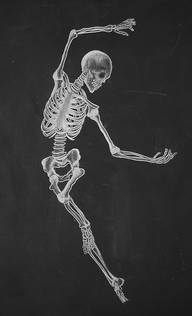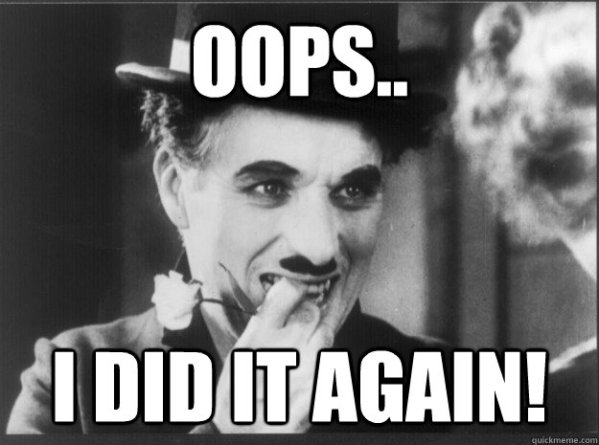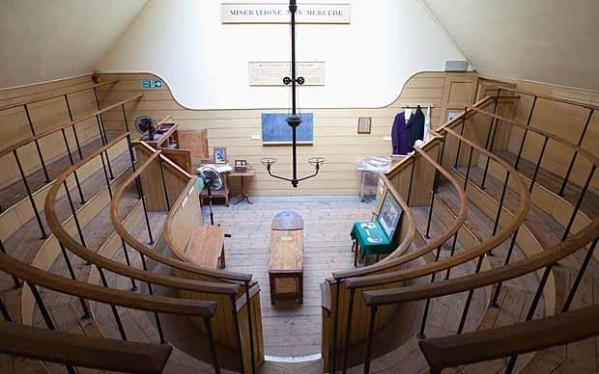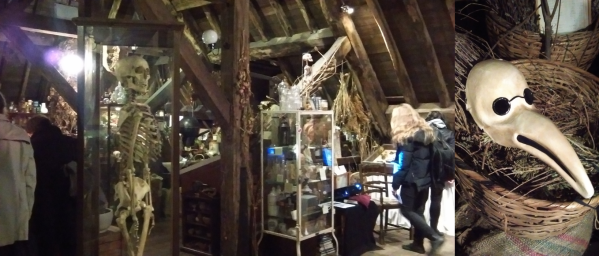
Skeleton in situ. Taken from Rivollat et al. (2014 Fig. 1 p.9).
Scrolling through the International Journal of Paleopathology I came across an article entitled ‘Ancient Down syndrome: An osteological case from Saint-Jean-des-Vignes, northeastern France, from the 5–6th century AD’ by Rivollat et al (2014). During my studies I only came across Down Syndrome in genetics it is caused by a partially or complete third copy of chromosome 21, which is why it can be called trisomy 21. I didn’t know much about the physical manifestations of Down syndrome and therefore thought this article might be an interesting read.
Down syndrome is not well documented in human history and only two sub-adult cases have been reported in the archaeological literature. However, it is noted that there is a large amount of variation seen in cases of Down syndrome which makes it difficult to interpret. This study looks at a child’s skull, aged 5-7 years old, from a necropolis dated to 5-6th Century in France. The skull used for study was buried in the same manner as the other skeletons, indicating that it did not have receive different treatment at death.
The individual in question had good bone preservation, although most of the thoracic and lumbar vertebrae and the right hand were missing. This skeleton was originally excavated in 1989, were a photograph was taken in situ (see above). However, post cranial skeleton was lost after this which meant that the current study could only use the skull for analysis. This skull was then compared to 78 skulls of children of similar age and background to look for signs of Down syndrome.
By taking morphometric observations and comparisons some variation of the skull was found. To begin with the cephalic index was larger than the population mean of 83 measuring at 106.2. This is a ration between the maximum width of the head and the maximum length. In the skulls result indicated ‘ultrabrachycrany; i.e.. a skull which was short in length and wider than the norm. This large width of the cranium has been described in Down syndrome patients. The shape of the occipital bone also differs from normal, which is dish shaped, and is flattened in the skull. When observing the sutures the some of the metopic suture was still present and many lambdoid wormian bones were seen. Wormian bones are irregular, isolated bones located within sutures of the cranium, in this case the lambdoid suture which separates the occipital bone from the parietals. These features are also indications of Down syndrome.

Anterior, inferior and lateral view of the skull, and superior view of the mandible. Taken from Rivollat et al. (2014 Fig. 2 p.9).
The mandible was also examined and measured and slight variations from the norm were found. These included a short mandibular symphysis and a narrowing of the breadth of the mandibular ramus. The angle of the jaw, the gonial angle, was slightly above normal. These are features which have been noted by Kisling (1966) and others referenced in the article.
Another area of interest was the thickness of the skull vault and by using CT scans an accurate measurement could be taken. It was found that the thickness varied over the skull and at anatomical points were inside and outside of the normal range. At the bregma (point at which the coronal suture is intersected perpendicularly by the sagittal suture) and at the naison (intersection of the frontal and two nasal bones) the skull is of normal thickness. At the lambda (meeting point of sagittal and lambdoid sutures) the it is thinner but thicker at the euryon (point on parietal bone marking either end of the greatest transverse diameter of the skull). The authors claim that the thinness at the back of the skull could be due to poor development of the bone and can be associated with Down syndrome.

Profile outline of the Saint-Jean-des-Vignes skull and superimposition with another skull of the same age group (O, Opisthion; Ba, Basion; I, Inion; L, Lambda; Br, Bregma; N, Nasion; Ns, Nasospinal; Pr, Prosthion; ST, Sella Turcica). Taken from Rivollat et al. (2014 Fig. 5 p.12).
For those who are unfamiliar with the anatomical names and points of the skull visit the following web pages. These Bones of Mine provides images and diagrams of the bones of the skull whilst Anatomy Navigator provides a good overview of the anatomical landmarks.
Finally the study looked at the indention of the individual and the authors state that there are many features which are suggestive of Down syndrome. This includes a lack of development of the second lower deciduous premolar, which can affect up to 92% of Down syndrome cases. There is an indication of the onset of peridontal disease by the presence of bone remodelling of the alveolar bone, and which may have caused some tooth loss.
From these features a diagnosis of Down syndrome was assigned, with a differential diagnosis of rickets and hydrocephalus. However these were ruled out due to the lack of porotic hyoerostosis for rickets and the presence of a normal cranial capacity for the child’s skull. Therefore the skull was given the diagnosis Down syndrome.
Whilst reading this article I did have some concerns about the diagnosis. At the beginning of the article the authors state that there have been few cases of Down syndrome found in the archaeological record, which means they have very few points of comparison. The second issue is that the diagnosis was based solely on the skull, as the post cranial skeleton was missing. As I know little about the physical manifestations of Down syndrome I did a quick search and it was very clear that these were very varied. There also appear to be few definite indicators of Down syndrome on the skeleton, and particularly lacking on the skull (this information was indicated from the following website). taking this into account I think that it was a little unwise to assign the skeleton excavated in the study as having Down syndrome, it may have been more accurate to suggest a possible incidence of the condition.
In fairness to the authors they do state that ‘none of the features is pathognomonic’ (p. 13) however I may have been more conservative in the conclusion, particularly with the absence of the post cranial skeleton.
Rivollat, M., Castex D., Hauret L. & Tillier A. (2014). “Ancient Down syndrome: An osteological case from Saint-Jean-des-Vignes, northeastern France, from the 5–6th century AD.” International Journal of Paleopathology 7(0): 8-14.

 I’ve left it a while since writing a blog post! Sorry the PhD took over my life for a while there (a bit more than usual!).
I’ve left it a while since writing a blog post! Sorry the PhD took over my life for a while there (a bit more than usual!).












